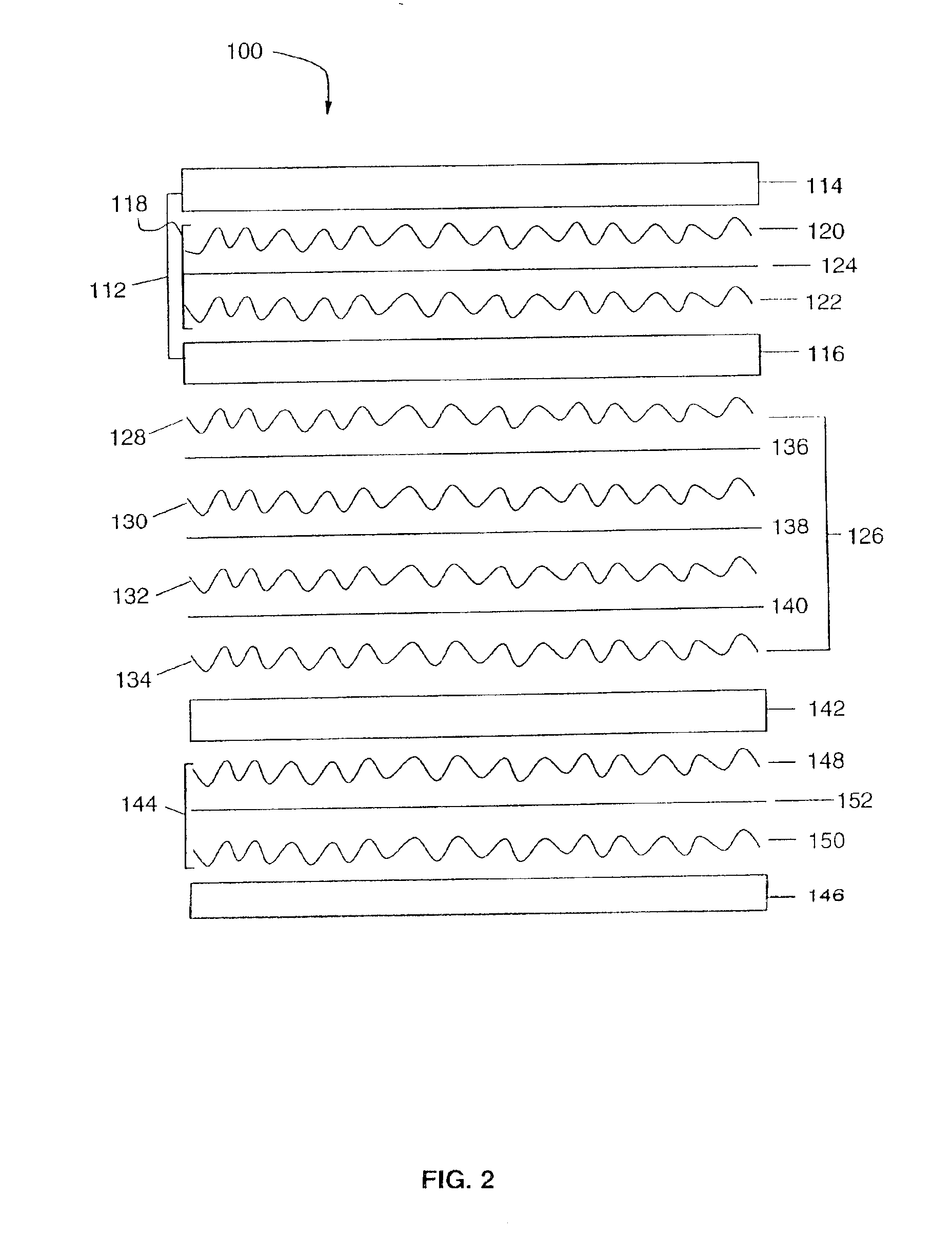Method for reducing coefficient of thermal expansion in chip attach packages
a technology of thermal expansion and chip, applied in the field of method for reducing the coefficient of thermal expansion in the chip, can solve the problems of warpage within the package, chip cracking, and often expensive process steps, and achieve the effects of lowering the cte, lowering the cte, and lowering the
- Summary
- Abstract
- Description
- Claims
- Application Information
AI Technical Summary
Benefits of technology
Problems solved by technology
Method used
Image
Examples
example 1
Prepreg was fabricated to provide a prepreg having about 60% by weight epoxy resin, 0.1% by weight curing accelerator 2-methyl imidizole and 40% by weight E-glass 1080, and b-stage cured to about 20 to 30%. Next, a multilayered structure was assembled which comprised a layer of copper sheet, a first layer of prepreg atop the copper, a second layer of prepreg atop the first layer of prepreg, a layer of non-woven quartz mat, a third and fourth layer of prepreg and finally a second layer of copper sheet. The non-woven quartz mat was about 0.004 inches thick before lamination, had a weight per unit area of about 17 g / m2 and was obtained from Technical Fiber Products Company. The multilayered structure was then vacuum laminated in a Wabash lamination press, at 185° C. for about 120 minutes at around 750 psi, to provide a reduced CTE laminate, in this case a laminate core. The copper layers on the outside of the core were then etched to form the circuit features using conventional techniq...
example 2
A reduced CTE laminate structure was made as in example 1, except that the core lacked a non-woven mat. Instead a non-woven quartz mat was employed between the fifth and sixth prepreg layers, and between the seventh and eight prepreg layers, so that 2.3% rather than 1.2% of the laminate structure was quartz non-woven mat. The resulting composite structure had a total thickness of about 26.2 mils.
example 3
A reduced CTE laminate structure was made as in example 1, except that a non-woven quartz mat was also employed between the fifth and sixth prepreg layers, and between the seventh and eight prepreg layers, so 3.4% rather than 1.2% of the laminate was quartz non-woven mat. The resulting laminate structure had a total thickness of about 26.5 mils.
PUM
| Property | Measurement | Unit |
|---|---|---|
| length | aaaaa | aaaaa |
| diameter | aaaaa | aaaaa |
| weight per unit area | aaaaa | aaaaa |
Abstract
Description
Claims
Application Information
 Login to View More
Login to View More - R&D
- Intellectual Property
- Life Sciences
- Materials
- Tech Scout
- Unparalleled Data Quality
- Higher Quality Content
- 60% Fewer Hallucinations
Browse by: Latest US Patents, China's latest patents, Technical Efficacy Thesaurus, Application Domain, Technology Topic, Popular Technical Reports.
© 2025 PatSnap. All rights reserved.Legal|Privacy policy|Modern Slavery Act Transparency Statement|Sitemap|About US| Contact US: help@patsnap.com



